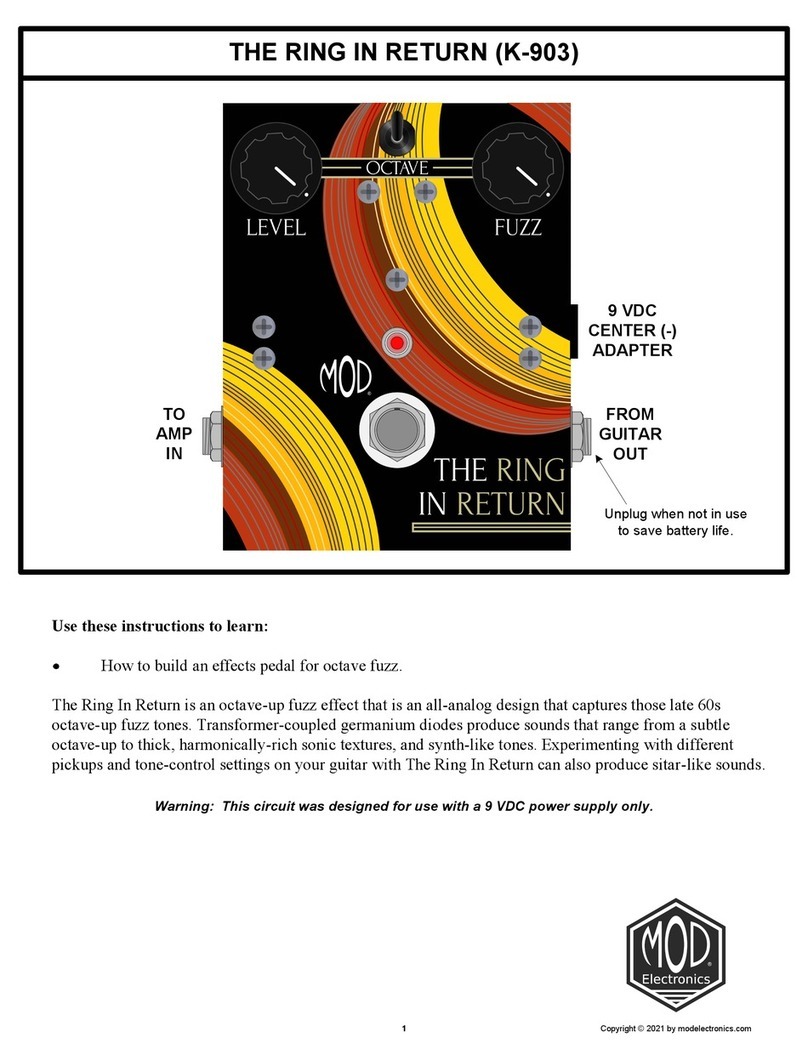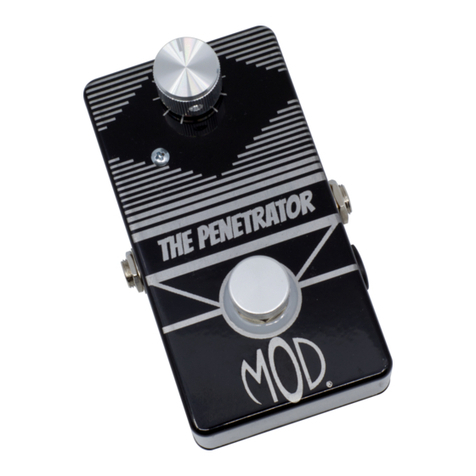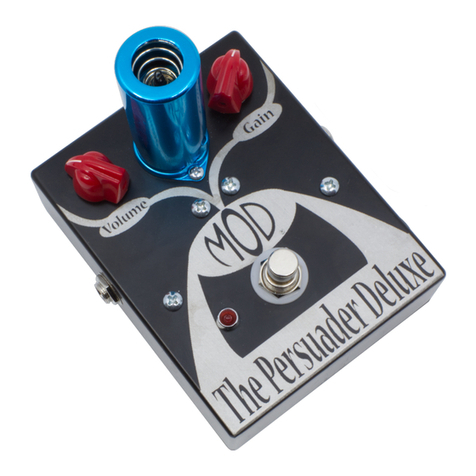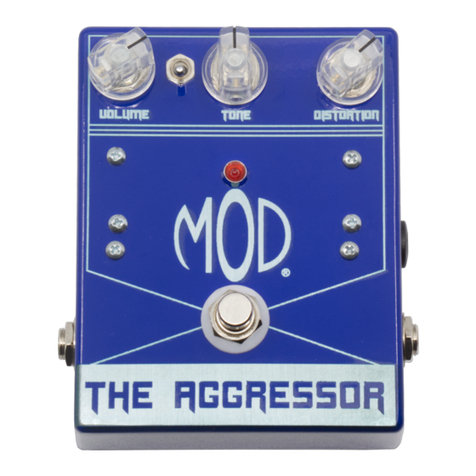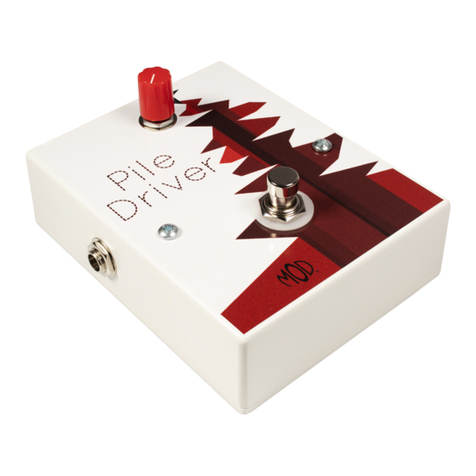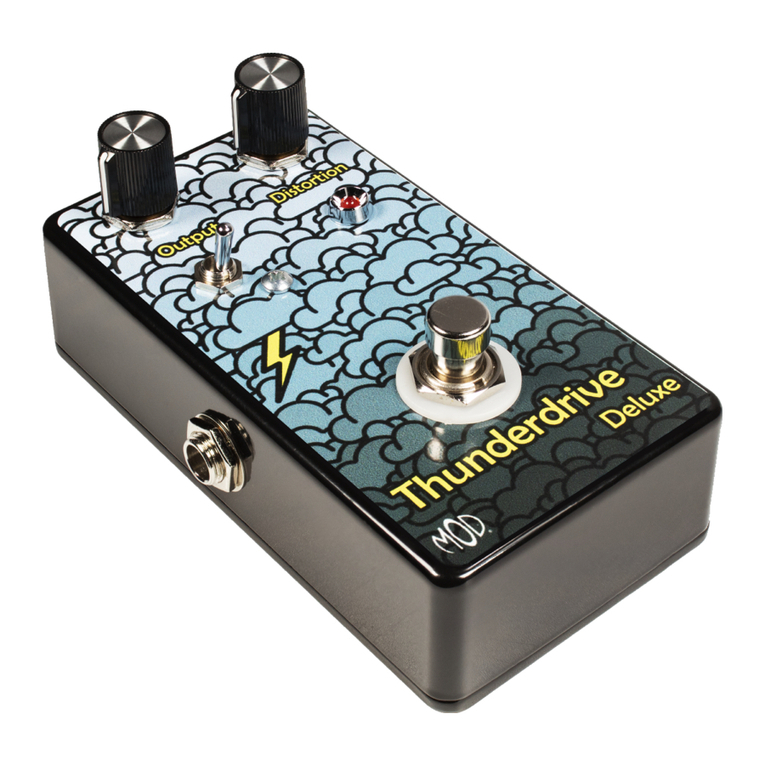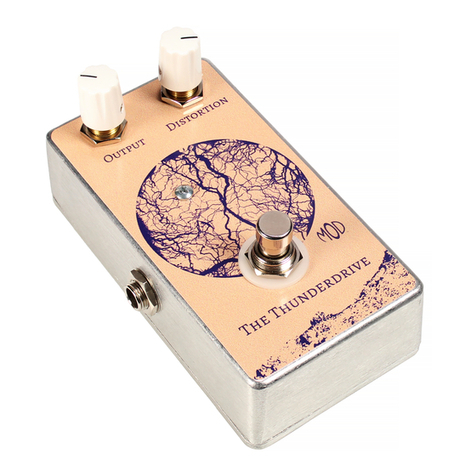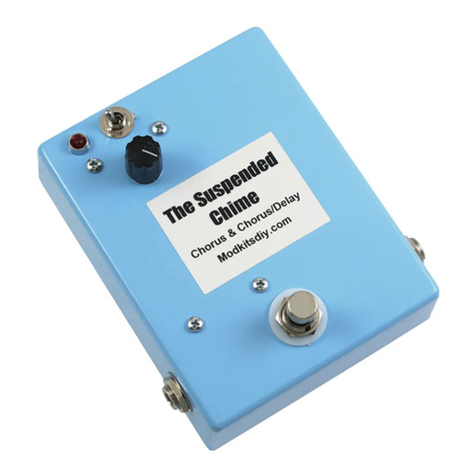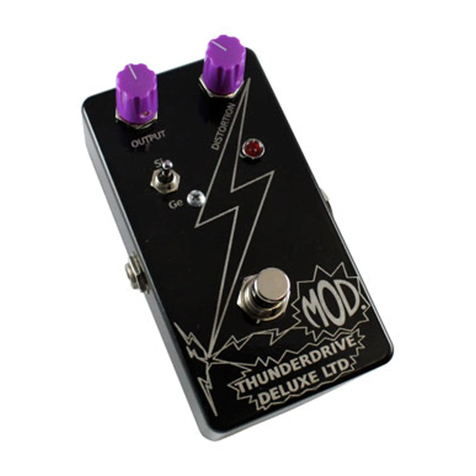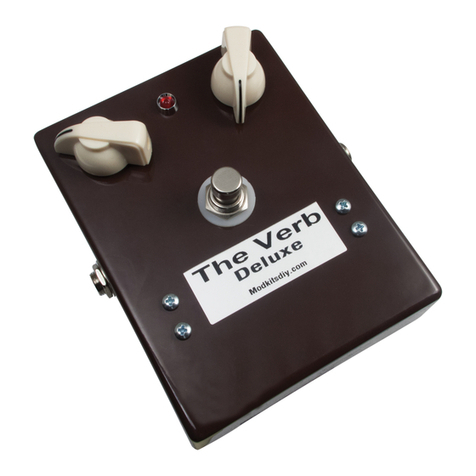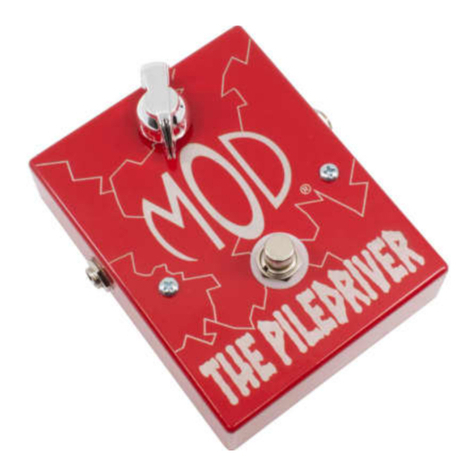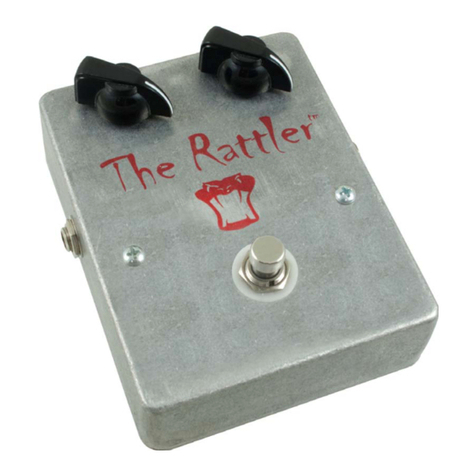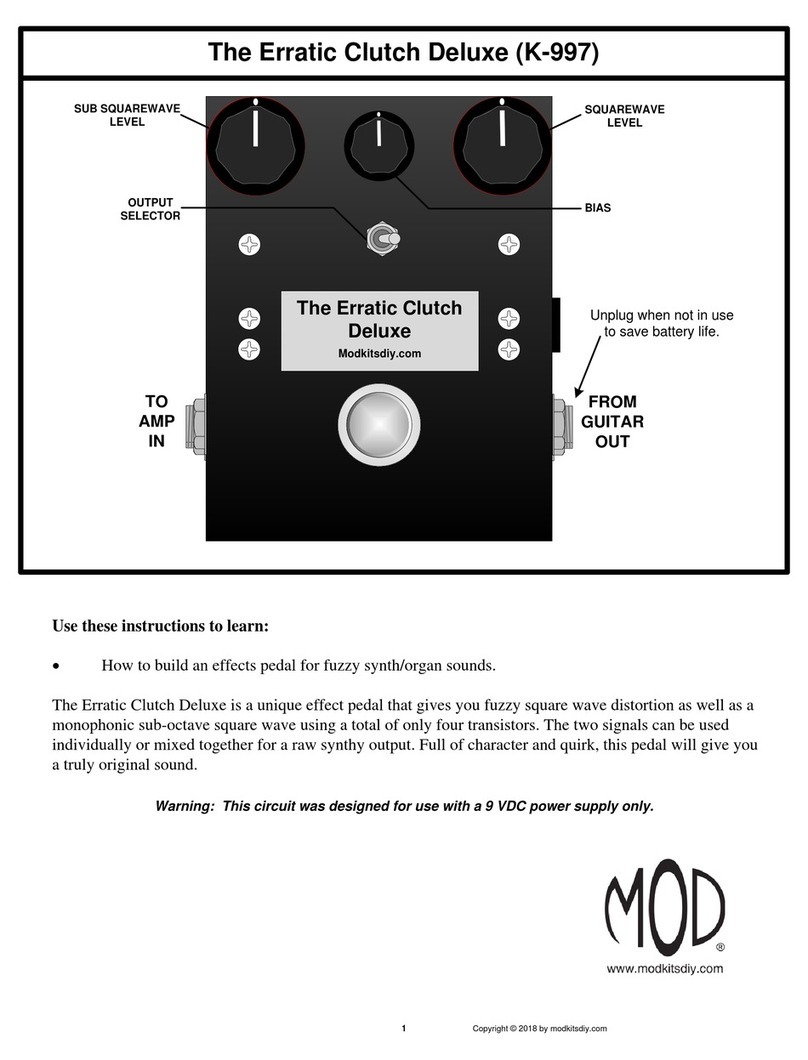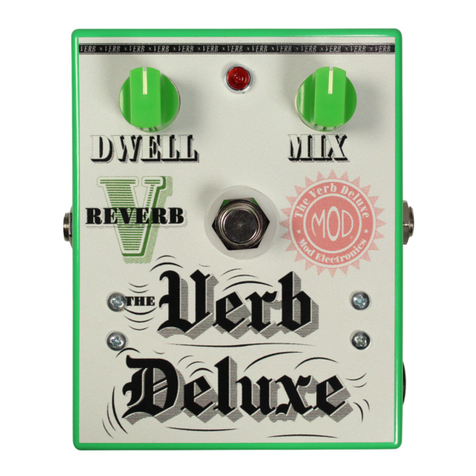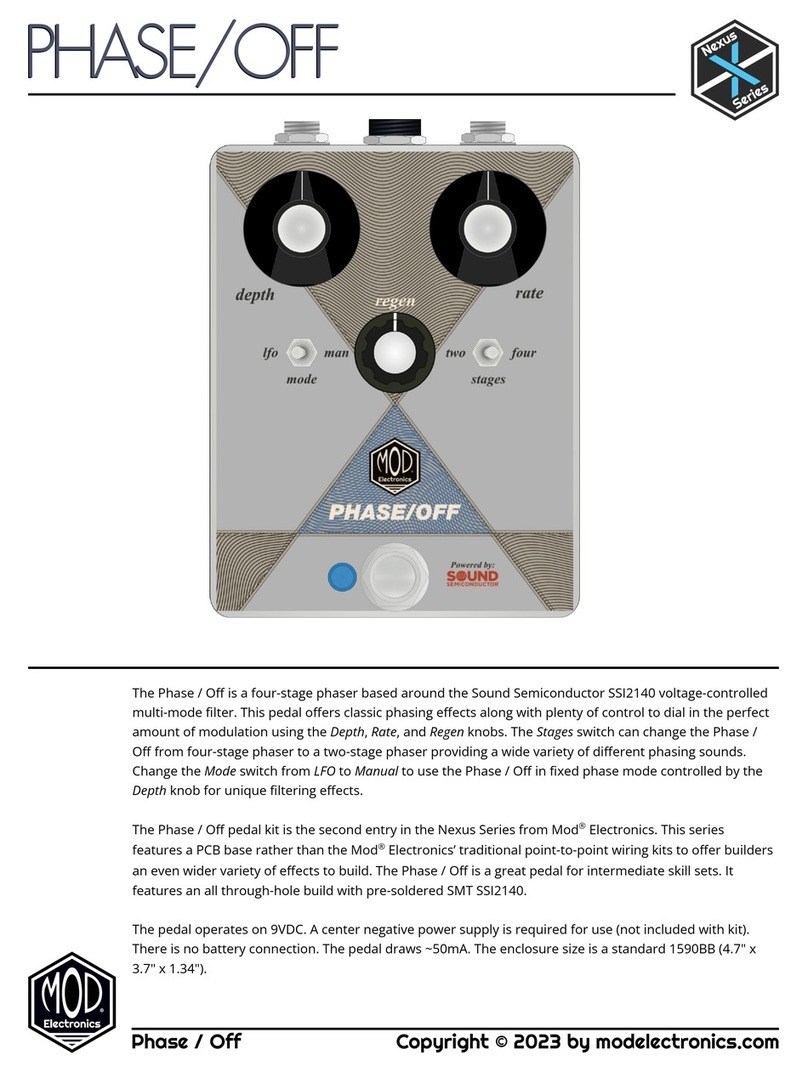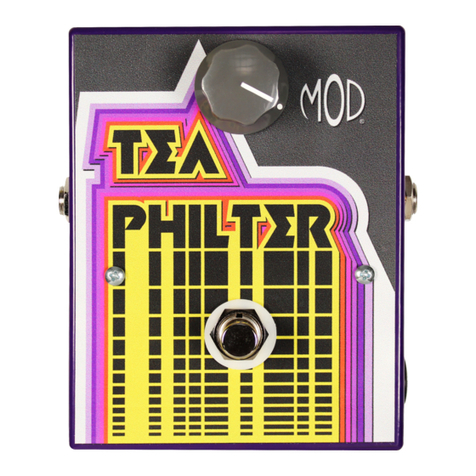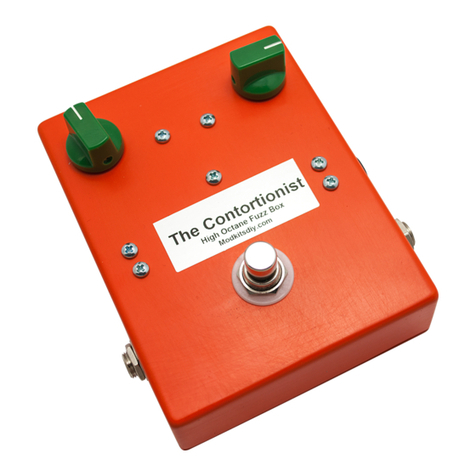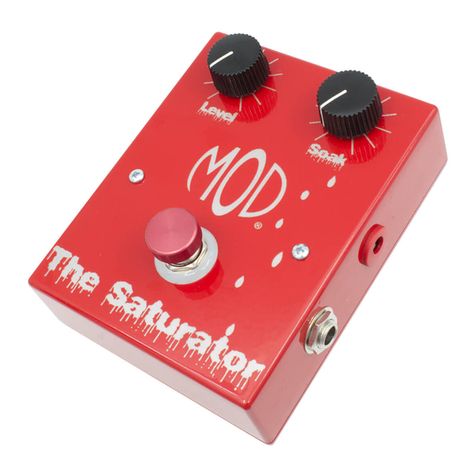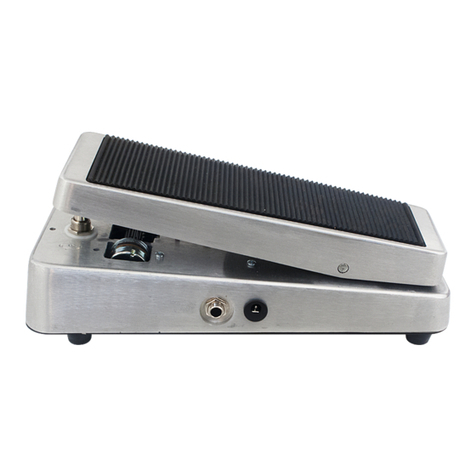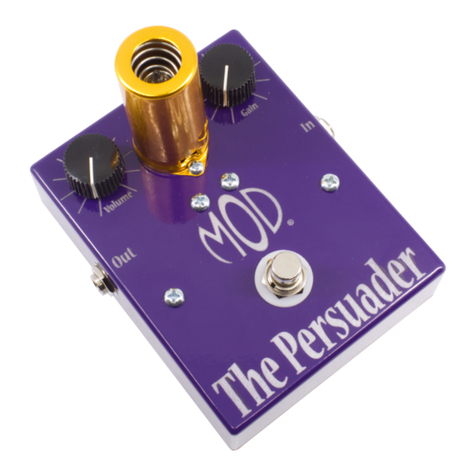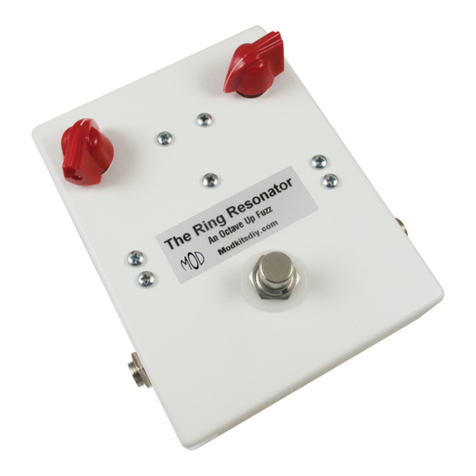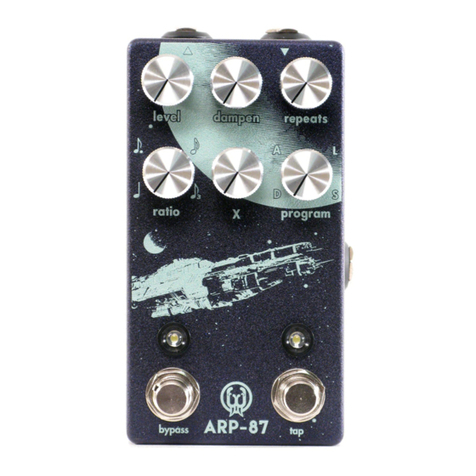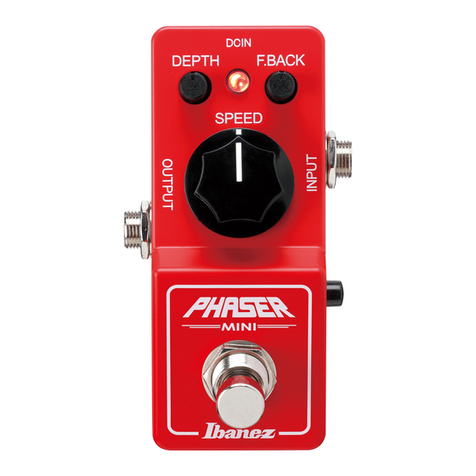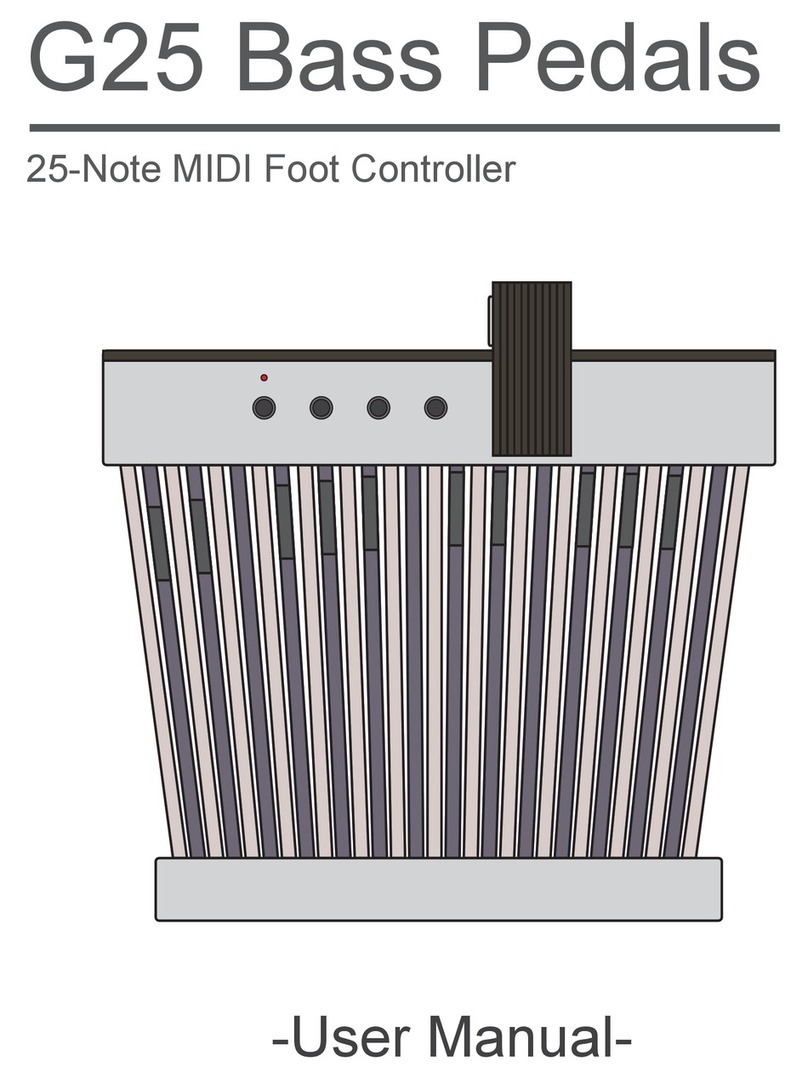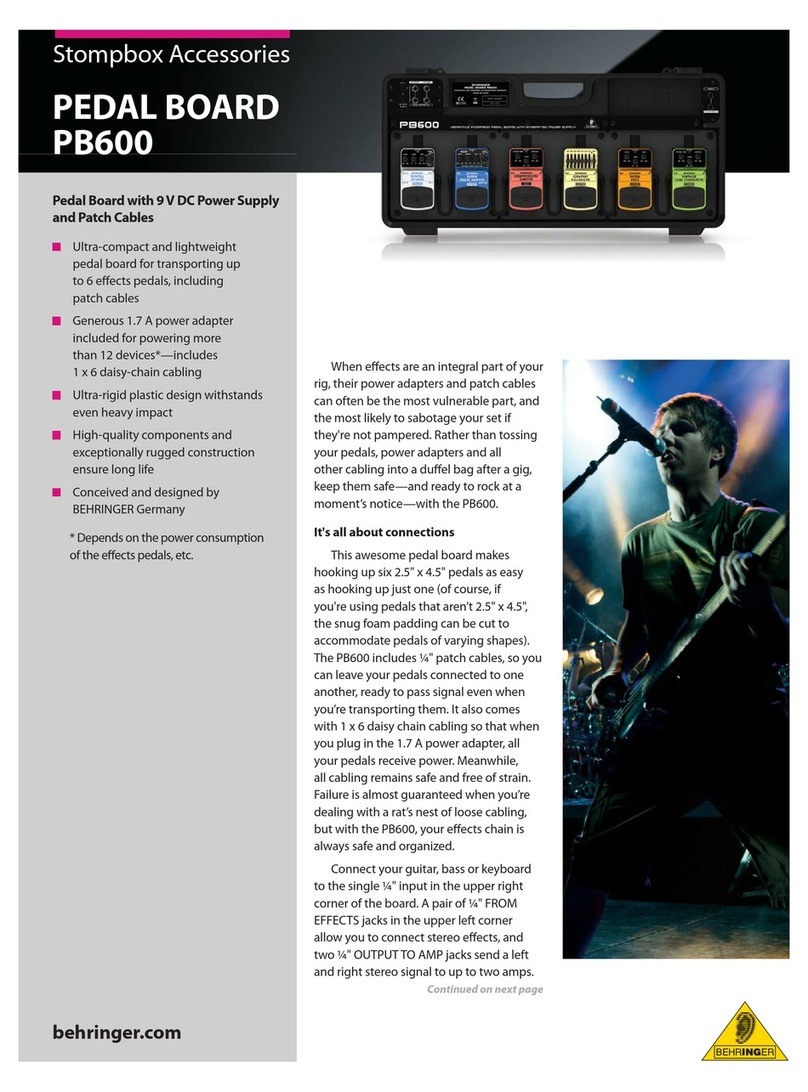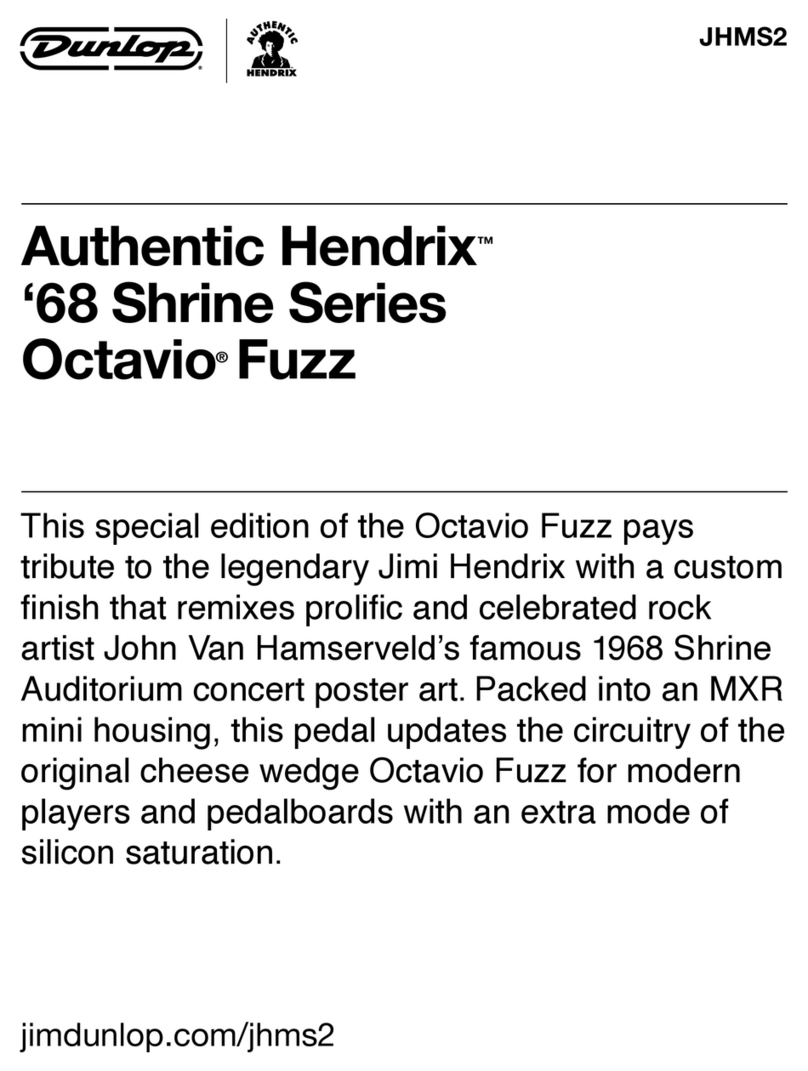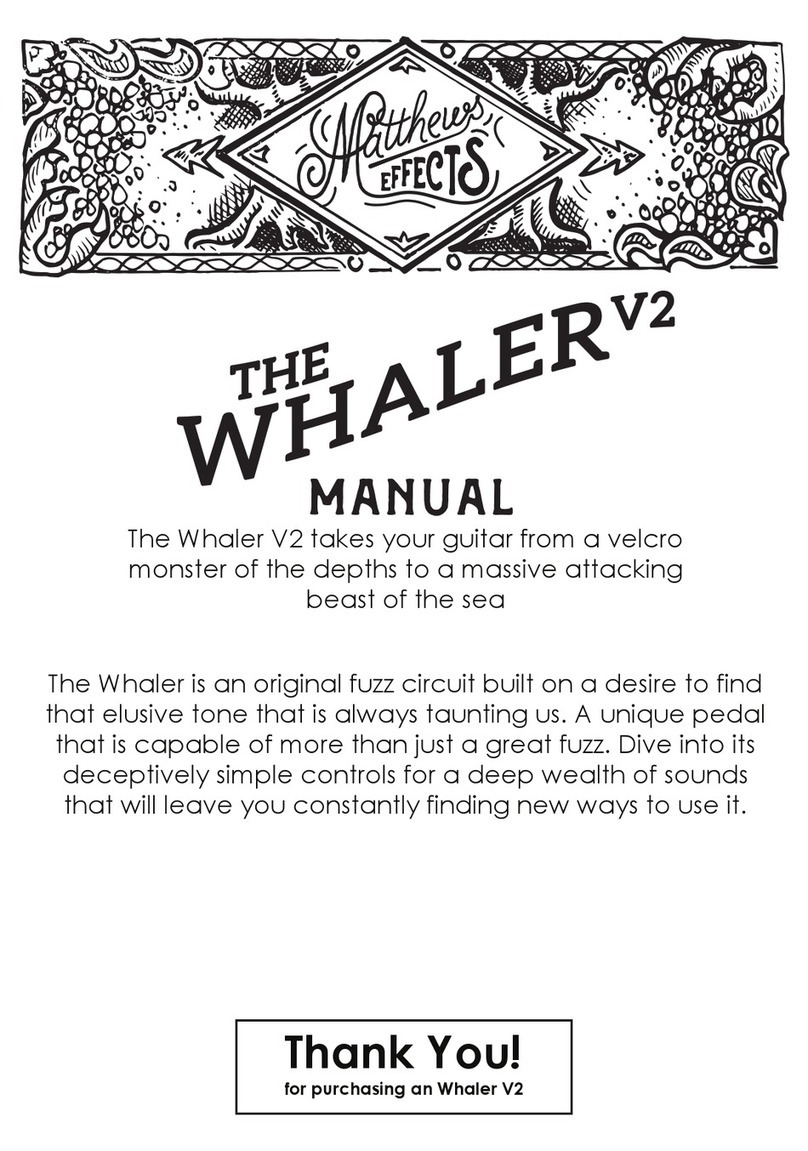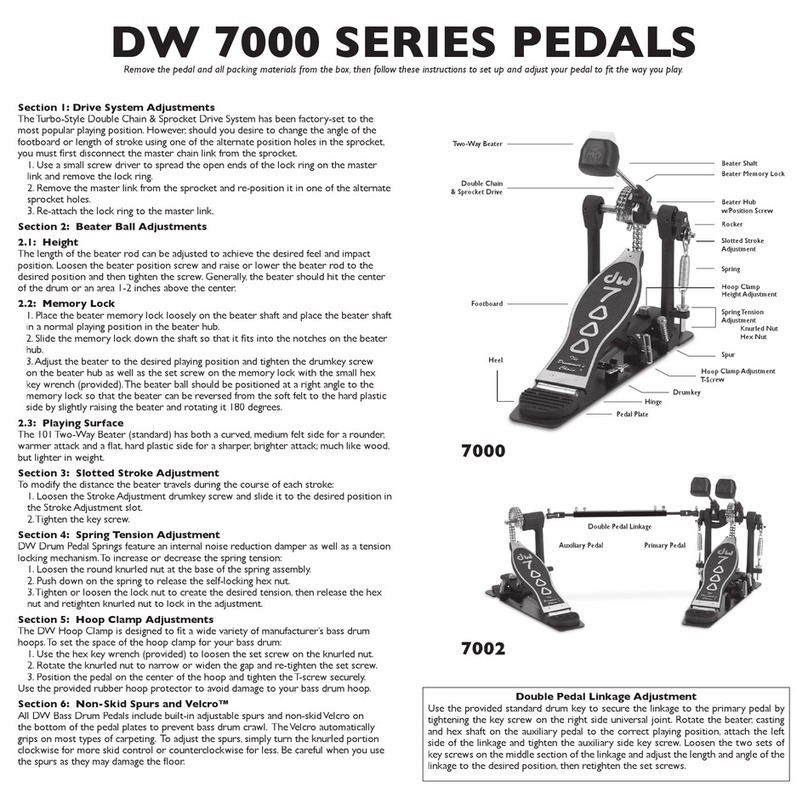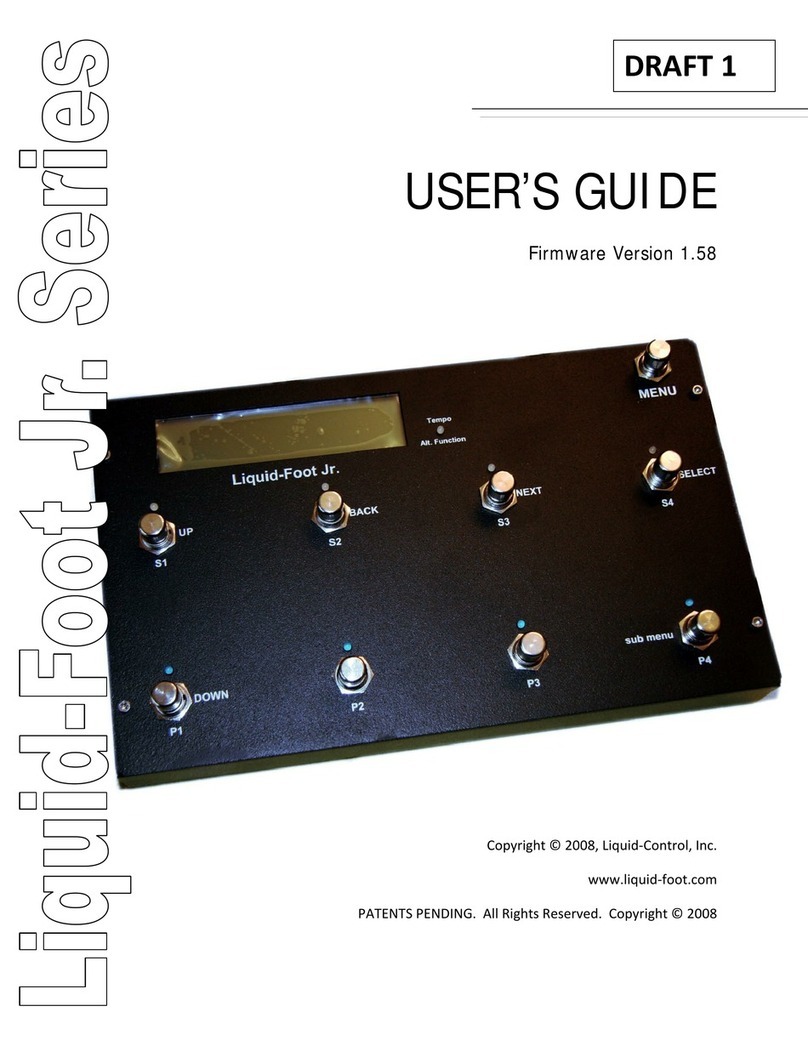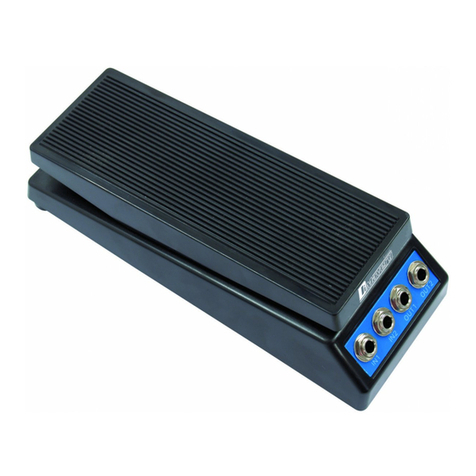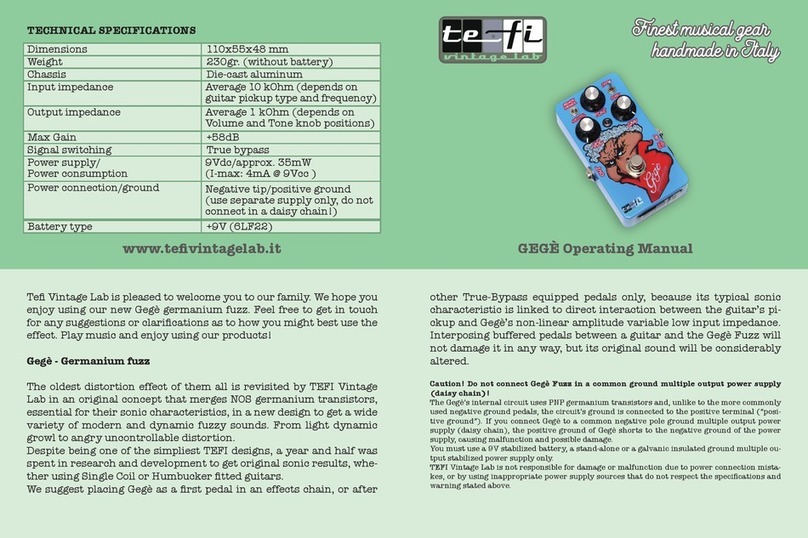Notes on PCB Construction
Seismic Shift JFET Boost 2
Lead Spacing
This section is intended for those unfamiliar with or new to constructing circuit boards.
Components are made in two common mounting types, radial and axial. Radial
components feature leads that are parallel and oriented in the same direction
whereas the leads of axial components protrude from each end of the component
oriented in opposite directions.
These parts will have corresponding footprints on the PCB marked with text.
C_ designates a capacitor and R_ is used for resistors. The BOM (bill of materials)
will cover all of the designators. Each footprint has a specific spacing.
Footprints for the radial parts will match the spacing of that part but axial parts
require preparation to fit. For the resistors in this kit you can simply use your
finger to push the lead until it is perpendicular where the lead meets the part.
Other axial parts will have lead spacing that are referenced in the instructions.
Use a lead former tool on these parts.
Soldering
After inserting the PCB into its footprint make sure that the component is sitting
flush against the PCB. Hold it in place and bend the leads on the opposite side of
the PCB away from the component. This will keep the component flush to the PCB
when soldering.
Make sure your soldering iron is fully warmed up before soldering. Position the
tip of the iron so that it is touching both the solder pad of the PCB and the
lead of the component. Slowly feed solder onto
the pad. The solder should flow evenly across
the pad and will slope up onto the component
lead. You may need to move the end of the solder
strand around the pad to ensure that the pad is fully
coated in solder and that it is also bonding to the lead.
Repeat this process for each lead of the component then
use a pair of cutters to snip the lead directly above the peak
of the solder.
Ideally the solder will flow through the pad hole and a small
amount will reach the opposite side of the PCB. This can
take some practice to master and is not critical. Focus on
consistently achieving full coverage of the pad with slight
slopes surrounding the lead first.
